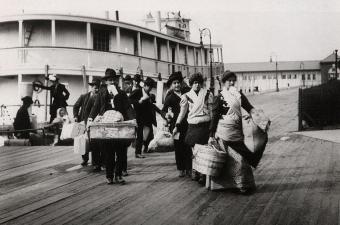U.S. Data
Recent Activity
Recent Activity
In 2006, about 271,000 foreign born of Pakistani origin were residing in the United States. MPI's Jeanne Batalova and Uriah Ferruccio examine the geographic distribution and socioeconomic characteristics of this population.
In 2006, the U.S. admitted more than 41,000 refugees for resettlement and granted asylum to more than 26,000 people. MPI's Kelly O'Donnell and Jeanne Batalova take a detailed look at refugee and asylum statistics in the United States.
Nearly 1.3 million individuals became lawful permanent residents of the United States in 2006. MPI's Gretchen Reinemeyer and Jeanne Batalova look at the latest statistics on legal immigration.
Of the 15.36 million union members in 2006, 12 percent were foreign born. MPI's Chuncui Velma Fan and Jeanne Batalova examine the data on immigrants and labor unions from 1996 to 2006.
Over half of the foreign born in the United States in 2005 arrived in 1990 or later. MPI's Jeanne Batalova and Aaron Terrazas look at the countries of origin, education levels, occupations, and other characteristics of newer immigrants.
This report offers a series of original charts that depict the characteristics of recent immigrants who are representative of those likely to be affected by the proposed merit-based points system for selecting permanent immigrants to the United States.
While official measures of annual permanent immigration levels simply account for those who obtain lawful permanent resident status in a particular year, this report offers a more complex approximation by including estimates of certain forms of temporary immigration and unauthorized immigration in the calculus.





